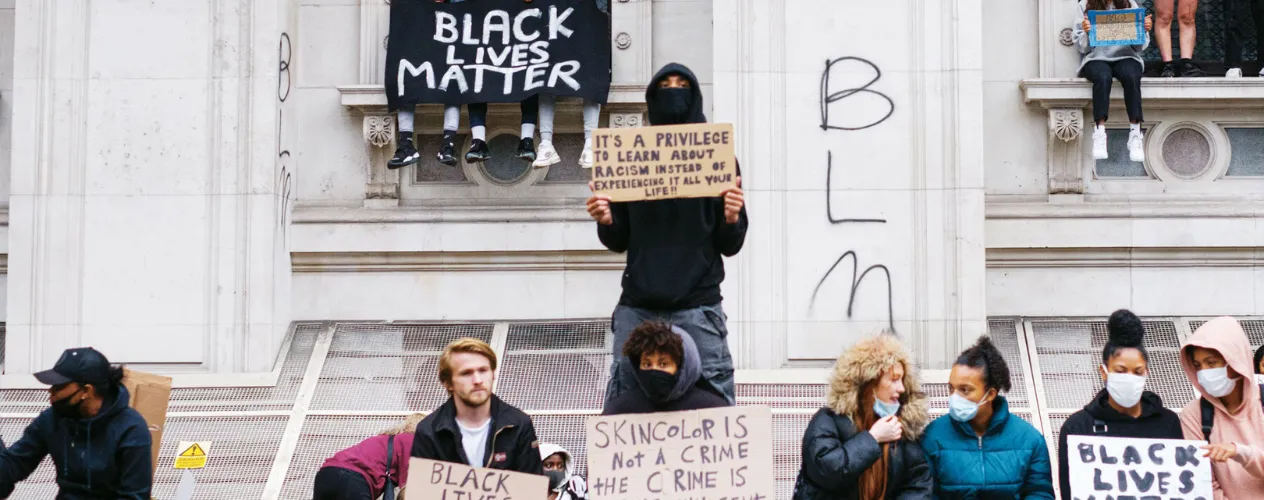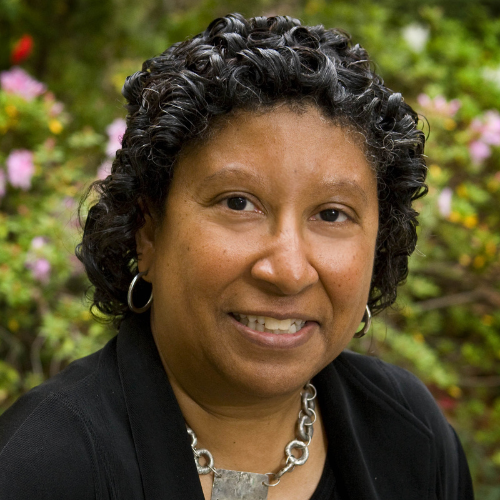'Which Death Do Black Men Risk—COVID-19 or Police Shooting?'
Fielding School professor Vickie Mays explains how structural racism has played a role in the response to COVID-19 — and in the decisions of many to accept a level of risk in the process of demanding change.

SO FAR, THE YEAR 2020 has seen two major historic events — the public health crisis brought on by the COVID-19 pandemic, and the massive nationwide protests against structural racism following the police killings of Breonna Taylor and George Floyd and inaction in response to the shooting death, captured on video, of Ahmaud Arbery by two white residents.

Vickie Mays, a Fielding School professor of health policy and management, has focused on their intersection. Structural racism is contributing to the disproportionate impact of the pandemic in Black communities and the reticence of some Black men to wear masks, she notes; at the same time, Mays says, the calculation that racism is a far greater life-and-death health concern than COVID-19 has played a role in the decisions of many to join the protests, despite the risks associated with large gatherings.
Mays has worked with members of the Congressional Black Caucus, as well as the White House and the American Psychological Association, on legislation to require better data on the race, ethnicity, and social risk factors of people vulnerable to the pandemic. She has also conducted research on the data needed to create better models for predicting the spread of COVID-19, in order to reduce the number of infections and deaths in Black communities.
“While the media has reported that Blacks are disproportionately infected, hospitalized, and dying from COVID-19, little has been provided on resources specific to the Black community,” says Mays, who, in addition to her FSPH faculty position, is a professor of psychology in the UCLA College and director of the UCLA Center on Bridging Research Innovation, Training and Education for Minority Health Disparities Solutions.
“The portrayal of COVID-19 implies that Blacks, because of their poor health status, will get the virus and die,” she adds. “Yet, little is focused on the role of labor practices in which Blacks in America work in occupations and places more likely to put them at risk to being infected. Rarely do we hear about the numbers of Black Americans who work in essential jobs, provide them personal protective equipment, and thank them for being our bus drivers, the maintenance cleaners in the hospital, the workers in the meat plants and many other jobs at which they work, often with no sick days or ability to work from home. Rarely are we hearing about the fact that Blacks in the U.S. are twice as likely as whites to not have running water or indoor plumbing in order to wash their hands frequently.”
Mays, who recently was among the featured speakers for “COVID-19: The Battle to Save Black Lives,” a virtual town hall about the health, economic, and social impacts of the pandemic on Black communities sponsored by the Minority Health Institute, says better race/ethnicity data on COVID-19 is needed to ensure that adequate planning and prevention resources are allocated where they are needed. “Black Americans are at high risk for COVID-19 based not just on their health disparities, but disparities that exist based on a lack of health care resources, the ability to respond to stay-at-home orders, effective isolating at home because of the lack of space in their living quarters, or a lack of income that allows them to purchase goods only for a few days at a time, requiring more store visits,” Mays says.
The recommendation by the U.S. Centers for Disease Control and Prevention that people wear masks in public to prevent the spread of the coronavirus raised an issue for Black men, Mays notes: whether covering their face would reduce one risk while increasing another — the chance of being viewed suspiciously and targeted by police and security personnel. “Which death do Black men risk? COVID-19 or police shooting?” Mays says. “We have African American men who have been dragged out of stores, who have been ordered by police and store guards to pull their masks down or take their masks off.”
A Rutgers University study published last year found that approximately 1 in 1,000 Black men and boys in America could expect to die at the hands of police in their lifetime — a public health crisis that prompted many to calculate that attending demonstrations to demand change was necessary, even during a pandemic. “There are people who are willing to risk getting this virus because the issue of Black men getting killed is so real in the community,” Mays says. “They know the risk of COVID-19 is there, but the social justice issue is too important. And in some cases, people have determined that the greater risk is getting killed by police.”
Mays believes leaders must acknowledge the role racism plays related to the pandemic response, from the targeting of Black men wearing masks to the lack of systematic data collection on the race of those infected, which works to the detriment of rapid and effective prevention efforts. She notes that bias plays out in actions as fundamental as the treatment of essential workers of color. “People were making masks and buying masks for health care workers, but they didn’t give those things to the janitors cleaning up,” Mays noted in an interview with STAT published in June. “They didn’t give those things to the bus drivers.”
A key lesson policymakers should draw from the pandemic, she concludes: “We are all connected. The extent to which we allow members of our society to be unequal is the extent to which we endanger the health of all.”
